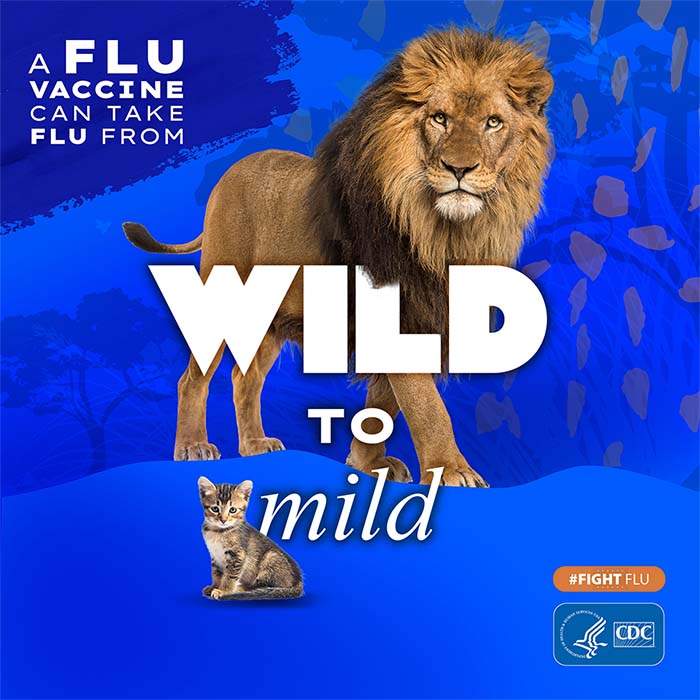CDC Takes Action to Prepare Against “G4” Swine Flu Viruses in China with Pandemic Potential
July 2, 2020 – A recent publication in the journal Proceedings of the National Academy of Science (PNAS) describes a group of H1N1 swine influenza viruses that have “the essential hallmarks of being highly adapted to infect humans” and which are therefore of potential pandemic concern.
This group of viruses, referred to as “G4” Eurasian (EA) avian-like H1N1 viruses, has been spreading in pigs in China since 2016 and has become the predominant genotype found in Chinese pigs. According to the report, these viruses have the right characteristics for causing infections in people, including the ability to grow well in human lung cells and to spread by respiratory droplets and direct contact in an animal model. While only three human infections with G4 viruses have previously been reported, this study found that about 10% of swine workers from whom blood samples were taken in China had evidence of prior infection with G4 viruses, suggesting that human infection is more common than previously thought.
It’s important to note that there are no reports of G4 viruses spreading from person-to-person, a characteristic that is required in order for a pandemic to occur. Also, G4 viruses have not been detected in pigs or people in the United States. However, like all flu viruses with pandemic potential, CDC is taking a number of actions to monitor and prepare against this emerging public health threat, including:
- Coordinating with public health partners in China, including requesting a virus sample
- Assessing the risk of the virus causing a pandemic using CDC’s Influenza Risk Assessment Tool (IRAT)
- Evaluating whether an existing candidate vaccine virus (CVV) against a closely related flu virus (called “G5”) would protect against this virus,
- If needed, creating a new CVV specific to G4 viruses, and
- Studying whether existing flu antiviral drugs offer protection against this group of viruses.
These G4 viruses would be detected by the current CDC Influenza Virus Real-time RT-PCR Influenza A (H1/H3/H1 pdm09) Subtyping Panel, which would indicate this was an H1N1 variant virus infection. CDC has guidance for clinicians on variant virus infections and state public health laboratories have standing orders to forward variant viruses to CDC for further study.
G4 swine flu viruses in China described in the PNAS report have a mix of genes from influenza viruses found in humans, birds and pigs. Five genes of the G4 virus came from the 2009 H1N1 virus that caused the 2009 flu pandemic. Based on laboratory transmission studies in ferrets, G4 viruses can spread via direct contact or via respiratory droplets. CDC has tested a closely related G5 virus in its laboratories and observed transmission similar to what was reported in this study.
G4 viruses likely resulted from a process called “reassortment,” which occurs when two or more influenza viruses infect a single host and exchange genetic material. This can sometimes lead to the emergence of new influenza viruses in people or animals. Pigs have been identified as a sort of “mixing vessel” for reassortment to occur because pigs are susceptible to infection with influenza viruses found in pigs, birds and humans. The 2009 H1N1 pandemic arose from a reassortment event between pigs, birds and human influenza A viruses.
The PNAS study showed that among 338 swine works whose blood was tested for antibodies, about 10% had evidence of past infection with G4 viruses. A higher rate was observed among 18-35-year-old swine workers. Regular households also were sampled, and about 4% of the 230 people from the general population had antibodies to G4 viruses. These data suggest that these viruses may have acquired increased capability of infecting humans. Study authors caution that continued circulation of these viruses in pigs and exposure to humans may allow for additional reassortment events to occur and that these viruses and infections should be monitored closely.
Experts believe most people would lack immunity against G4 viruses, and despite seasonal flu vaccines protecting against the 2009 H1N1 virus, G4 viruses are different enough that seasonal flu vaccines would be unlikely to provide protection or prevent onward human-to-human transmission.
A prototype candidate vaccine virus (CVV) from the closely related EA avian-like H1N1 G5 swine flu virus was originaly developed by the World Health Organization (WHO) Collaborating Center at the China CDC. A comparison of the genome of this virus to that of G4 viruses reveals that these two viruses are similar. Studies are planned to assess cross-reactivity between this vaccine virus and G4 viruses. If needed, CDC will work to create a new CVV made specifically against G4 viruses.
CDC and its public health partners around the world will continue to monitor this situation closely.
